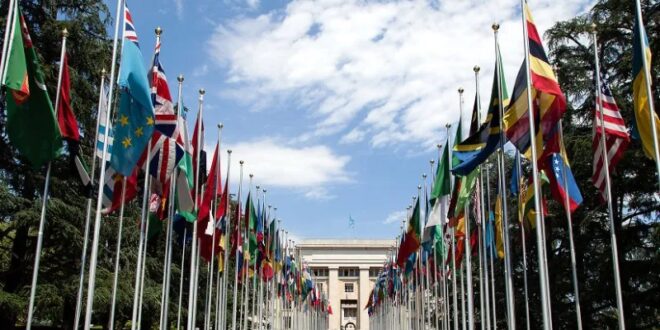There are reasons to believe that Poland‘s government and business world have finally started to re-discover Latin America. What are the underlying reasons for this phenomenon and what should we expect from it?
Poland’s double challenge
Despite being the EU’s sixth-largest state and currently one of its best-performing economies, Poland faces the double challenge of avoiding the middle-income trap and finding the right balance between its European and global engagements.
Until recently, Poland’s business activity and foreign policy have been predominantly focused on the Old Continent. Since the onset of the democratic transition in 1990, its political elites worked hard to re-integrate the country into its regional institutions. Then, after Poland’s accession to the EU in 2004, they strived to digest a newly embraced membership through establishing Poland as a desirable partner and an influential actor within the Union. Latin America, which in the 1990s had been an example of democratic consolidation and economic transition for Central Europe, disappeared from Poland’s radar a decade later.
The Euro zone economic crisis, however, has sounded the alarm for a substantial part of the Polish economic and political elite. Despite being still comfortably integrated into Germany’s production chains, the business community has increasingly started to experiment with markets beyond the EU, aiming for diversification. Several foreign ventures have ensued, mainly in Eastern Europe, the US and China, but in some cases also in Latin America. Eventually, in 2012, the copper-mining enterprise KGMH, Europe’s largest by output, made the biggest overseas investment by a Polish company in over 20 years: its acquisition of Canada’s Quadra FNX Mining made it the majority stakeholder in Chile’s Sierra Gorda mines. Other Polish companies have become interested in major Latin American infrastructure projects, such as railways. Polish distillers have established themselves strongly in the Brazilian market. Major operations such as these have encouraged other Polish firms to follow suit, just as they led to the improvement of Poland’s image abroad. The 2012 European football championship, jointly organised by Poland and Ukraine also appears to have played an important role in this respect. However, despite recent rumours about Brazil’s German Eframovich’s willingness to take over the Polish airlines, no major Latin American company has yet invested in Poland.
At the same time, the government was alerted to the problem of the middle-income trap and made several adjustments in its economic and foreign policy in order to avert its risks. Poland’s Ministry of Foreign Affairs has reinforced its efforts in the domain of economic diplomacy. It is now seeking business opportunities in geographically distant regions, including Latin America. In 2012 alone, Minister Radosław Sikorski and his team visited Brazil, Chile, Colombia, Mexico and Peru. On all these occasions the Ministry officials were accompanied by representatives of the business community, a relative novelty in this type of mission. The underlying rationale has been a growing need to find new markets given, on the one hand, Poland’s already high level of economic development and, on the other, its limited growth potential if it continues to depend on Europe (where 90% of its exports are officially directed).
Why Latin America?
Is it already possible to talk about the re-emergence of Latin America on Poland’s agenda? The question is what are the real potential and the limitations of Poland’s pivot towards Latin America. Will it be focused only on business? Or will economic diversification whet Poland’s appetite for geopolitics and re-new its interest in Latin American political affairs?
It is easy to identify the underlying reasons for the revival of Poland’s Latin American strategy. It can be argued that of all overseas areas apart from North America, Latin America is the only one that forms part of the common trans-Atlantic cultural community. This translates, among other things, into an important convergence in political and economic institutions –which should make cooperation with Latin American partners much easier than with those from Africa or the Far East–. The existence of an important and, in many cases, influential Polish diaspora in Brazil (1.8 million), Argentina (450,000), Chile, Mexico, Paraguay and Uruguay (10,000 each) as well as in the rest of the region may also be a valuable asset. The Polish diaspora has recently even made the headlines in the foreign press. The leader of the Venezuelan opposition, Henrique Capriles Radonski, and the latest winner of the Cervantes literary award, Mexico’s Elena Poniatowska, are proud of their Polish roots. Two out of 11 judges on the Brazilian Supreme Court, Ricardo Lewandowski and Teori Zawascki, bear typical Polish surnames.
All of these are undeniable assets which, nevertheless, might remain unexploited without the political will to make use of them. Unfortunately, Poland has so far not been able to take advantage of its diaspora overseas, for either economic or political purposes. The institutional proximity of Latin America has not been sufficiently appreciated, as shown by Poland’s ongoing enthusiasm and aspirations for doing business in China, in stark contrast with its relative reticence to enter the markets of Brazil and its neighbours.
A long and winding road
Poland will have to overcome many obstacles to provide its as yet theoretical Latin American policy with a real substance.
At present, Latin America accounts for a mere 1.5% of Poland’s foreign trade, the same as in the 1930s. Poland has only eight embassies in the region, after having closed three recently: in Costa Rica, Panama and Uruguay. Furthermore, the government’s economic diplomacy is, on occasion, surprisingly ineffective. The Ministries of Foreign Affairs and Economy have not yet designed a workable coordination mechanism for their individual globalisation efforts. This often leads to a certain amount of confusion as regards the country’s regional priorities: from 2012 the focus seems to have moved from Latin America to Africa and the Far East.
Apart from that, the Polish Ministry of Foreign Affairs has so far failed to give a clear answer to three questions which will be decisive for the country’s strategy towards Latin America. First, should the government adopt a pro-active role, supporting entrepreneurs, scientists and others in strengthening their links with the region? Or should it wait and react to demand as it arises? Secondly, should Poland pursue a bilateral strategy towards Latin America? Or should it concentrate on the EU’s common strategy and make use of its joint representations in the region? Finally, where should the balance be between politics and economy in the strategy towards Latin American countries, in particular those that are still at odds with the standards of liberal democracy? The EU and its Member States have to face these same dilemmas.
Europe calling
From the perspective of Europe’s strategy towards Latin America, it is encouraging to see that Poland’s increased attention to the region. Since the 1980s, when the EU established a common platform of dialogue with Latin America, the group of its active participants has not changed much. Despite Europe’s consecutive enlargements, no major country has joined an informal ‘big six’ comprising Spain, Portugal, France, Italy, Germany and the UK. As the EU has passed from a 12- to a 28-member organisation, Latin American issues have become progressively marginalised within its agenda. The 2008 economic crisis has put the final nail in the coffin, leading to Europe being even more self-confined. Interestingly, the creation of the European External Action Service has not led to a significant improvement. Over the past few years the European Trade Commissioner, Karl de Gucht, seems to have contributed much more to encouraging the EU’s relations with Latin America than Catherine Ashton.
In this context, Poland’s Latin American efforts may be a sign of a transition in Europe’s strategy towards the region, whereby potential stakeholders might finally attain a ‘critical mass’ while at the same time new issues (eg, middle-income country reforms, regional integration) can come to the fore.
Nevertheless, before Poland contributes constructively to the EU’s Latin American strategy, it will first have to resolve its own globalisation dilemmas.
 Eurasia Press & News
Eurasia Press & News




